Can Breeding Pest-Resistant Trees Save American Forests?
Pests are ravaging keystone species like ash, elm, and beech. But researchers are breeding the survivors into more resilient populations.
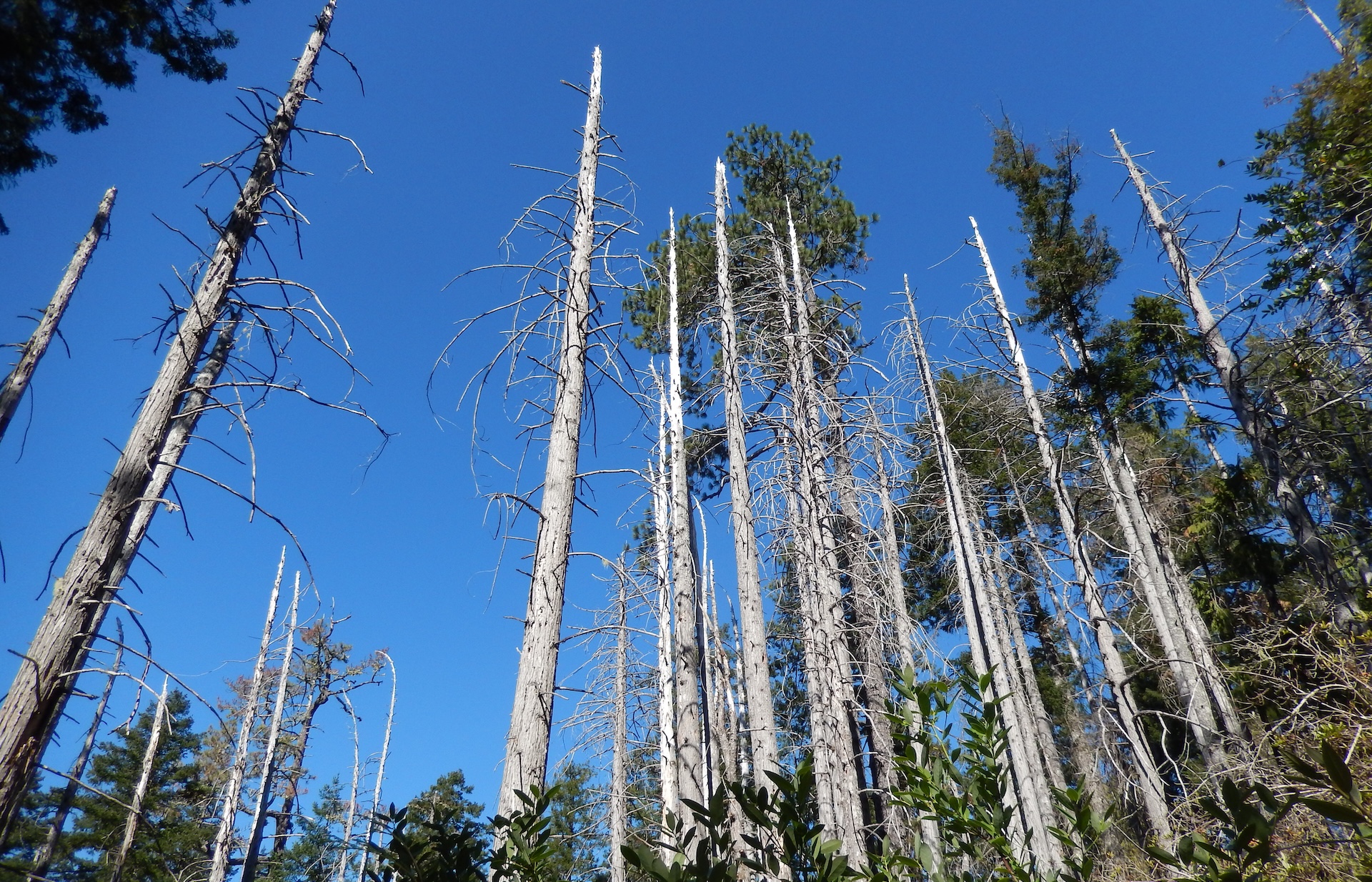
Port Orford cedar trees in Redwood National Park that were killed by the root disease caused by the pathogen Phytophthora lateralis. Credit: Richard Sniezko
In the early 2000s, U.S. Forest Service geneticist Dr. Jennifer Koch walked just about every trail that winds through Michigan’s Ludington State Park. She wasn’t hiking for fun. She was looking for a very specific type of tree.
The trees she wasn’t looking for were everywhere: lumbering beeches in the conspicuous process of succumbing to beech bark disease. The deadly fungal infection often reveals itself through fluffy, white insect infestations.
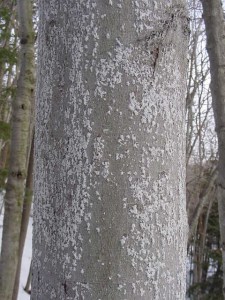
“When you’re walking around in the middle of summer and you see ‘snow’, you know that that tree has issues,” Koch says. She was looking for the fuzz-free individuals, and each one she stumbled across sparked a twinge of hope.
Koch finished her survey at the 4,800-acre park with only five or six trees that she thought might be resistant to the disease. But it was enough. That handful of specimens helped her return to Ludington some two decades later, with almost 250 beech bark disease-resistant saplings in tow. And Koch’s work helped reignite an otherwise sleepy effort to breed resilient trees.
Now, as invasive pests and pathogens settle into the American landscape en masse, breeding resistant trees has become more urgent than ever before. Ash, elm, hemlock, and beech are of particular concern on the Eastern Seaboard, with new infestations reported each year. In response, a recently invigorated group of entomologists, geneticists, tree breeders, and ecologists is trying to find the few trees that can resist disease, selectively breed them, and plant seedlings across the country. It’s slow and meticulous work, but it may be their only shot.
Beetles, fungi, moths, and microscopic worms are just a few of the many pests and pathogens hollowing out forests across the continent. They’ve attacked more than a dozen species that are foundational to the mosaic of American forests, including oak, cedar, pine, ash, elm, chestnut, beech, koa, ʻōhiʻa lehua, and butternut. Billions of trees have already died.
“We almost lack the imagination to realize what is missing because other trees grew up around those spaces, and it changes a forest into the thing we look at today,” says Leigh Greenwood, the program director for the Nature Conservancy’s Forest Pest and Pathogen Program. “But it’s not the same forest.”
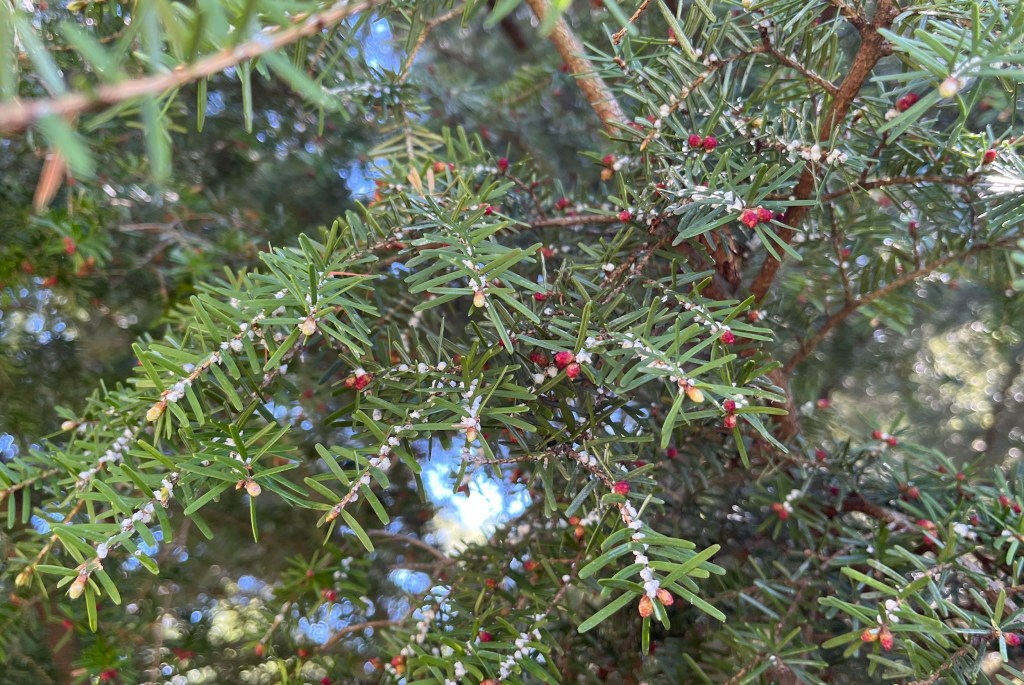
While scientists will debate which trees matter most to the American landscape, they tend to agree that keystone tree species are essential to functioning forests. Elm trees thrive in the floodplain forests of eastern North America, reducing flood damage by stabilizing soil and absorbing rainfall. Hemlocks, with their dense, evergreen needles, help keep streams cool by delaying snowmelt. Ash trees support wetland ecosystems and help maintain water quality. In New England, beeches are a critical food source for black bears—so much so that studies have shown that in years with fewer beech nuts, bears will get in more trouble with humans.
Each of those species is at risk of disappearing as Dutch elm disease, hemlock wooly adelgid, emerald ash borer, and beech leaf disease spread. If left unchecked, pests and pathogens will consume much of the American forestscape—and wipe out the valuable services those trees provide to people and wildlife.
Stopping these particular invasions at scale has proven nearly impossible.
“Can you spend a couple of hundred dollars every couple of years to inject pesticides into all of the important trees in your backyard or your park? Absolutely,” says Greenwood. But “you cannot scale that up to a forest, across a state, or to a mountain range.”
To pave a better path forward, scientists like Jonathan Rosenthal and Dr. Radka Wildova, conservation biologists at the Ecological Research Institute in New York, are training volunteers, researchers, and forest professionals to closely examine what an invasion leaves behind. They teach people to find “lingering” survivors.
“You’re detecting them by virtue of them being really healthy trees, outstandingly healthy trees, when almost everything around them is dead,” says Rosenthal, who works across New York and New England through the Monitoring and Managing Ash program. Finding these specimens requires keen eyes, historical pest invasion data, and an enormous amount of luck.
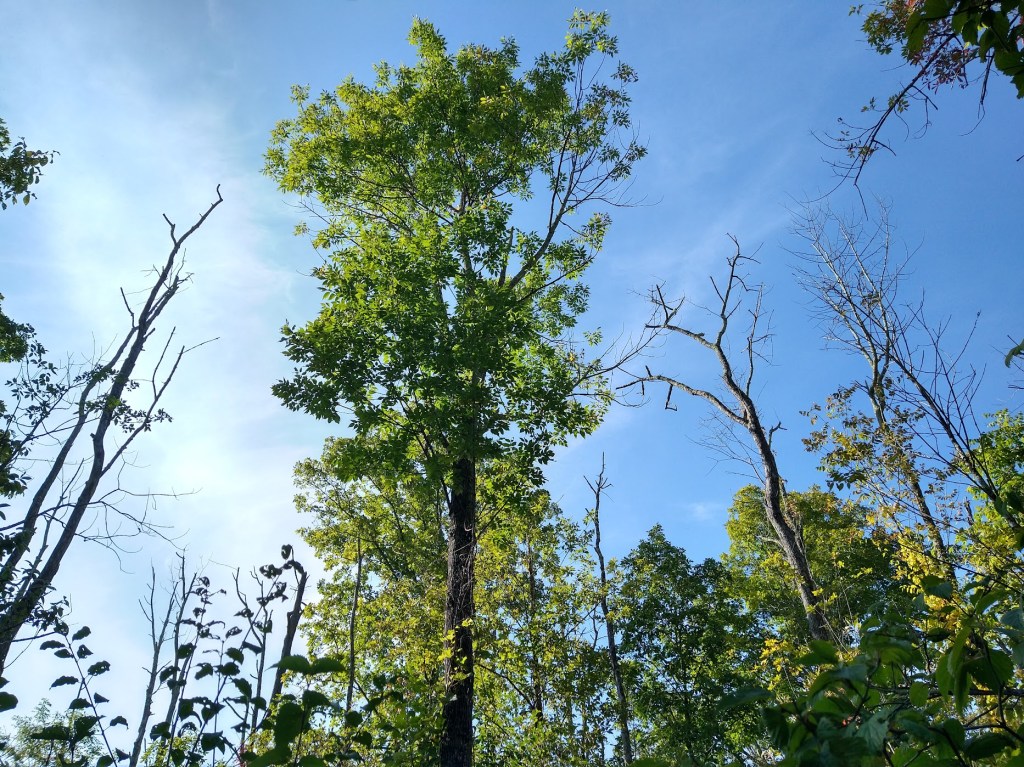
When a lingering ash, elm, hemlock or beech is identified, researchers cut off young twigs, called scions, and send them to nurseries. Much like a plant owner might propagate a philodendron or monstera, researchers can graft the branches onto rootstock and grow genetic clones—that is, new trees.
Once the small saplings are growing, researchers get creative to check how resistant to disease the tree really is. Their methods run the gamut. Some, like Dr. Kathleen Knight, a research ecologist at the U.S. Forest Service, drill holes into the trunks of elms to inoculate them with Ophiostoma novi-ulmi spores, which cause Dutch elm disease. Others, like Koch, are raising emerald ash borer eggs directly on the bark of young trees. And Dr. Richard Sniezko, a leading tree resistance breeder, infects pine saplings with white pine blister rust fungus inside what he calls the “biggest fog chamber in the world.”
If the trees truly have some resistance, they keep growing.
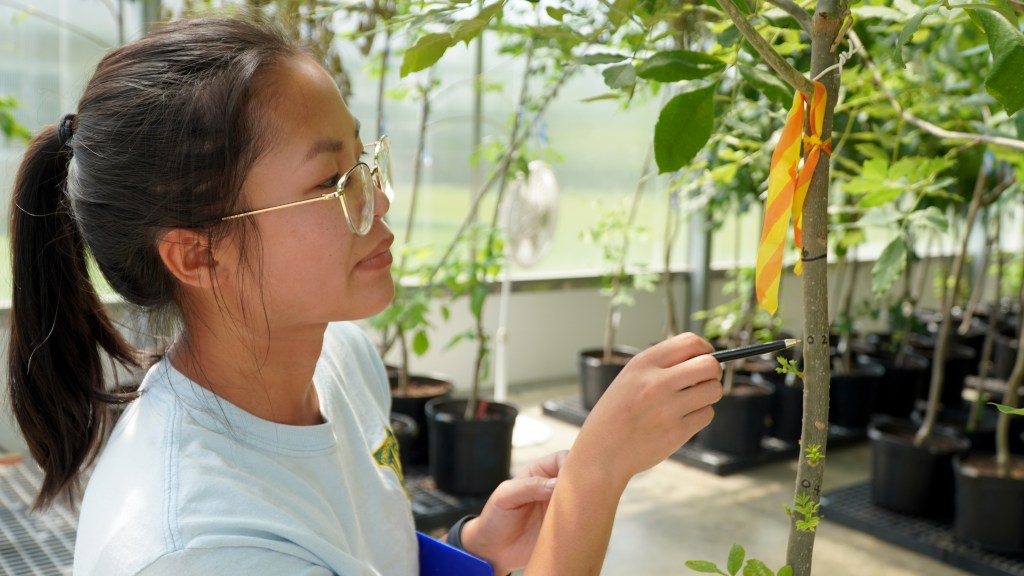
“At this point, every one of those trees has had this deadly fungus squirted into it,” Knight says of her elm saplings. “But they’re alive and they’re growing, and they’re healthy and beautiful.”
Her team has grown thousands of clones from more than 150 survivor trees found in four distinct regions of the country. The clones are then grown in different climates so researchers can learn how environmental conditions impact resistance.
The meticulous work doesn’t end there. Young saplings are tedious to nurture, and it can take years before they bear seed—the crucial next step for reforestation.
“It’s an incredible amount of effort, investment, time, and dedication,” says Greenwood, who oversees resistance breeding work across multiple species. “But we’ve actually seen success here. This isn’t crazy, and it’s not unrealistic.”
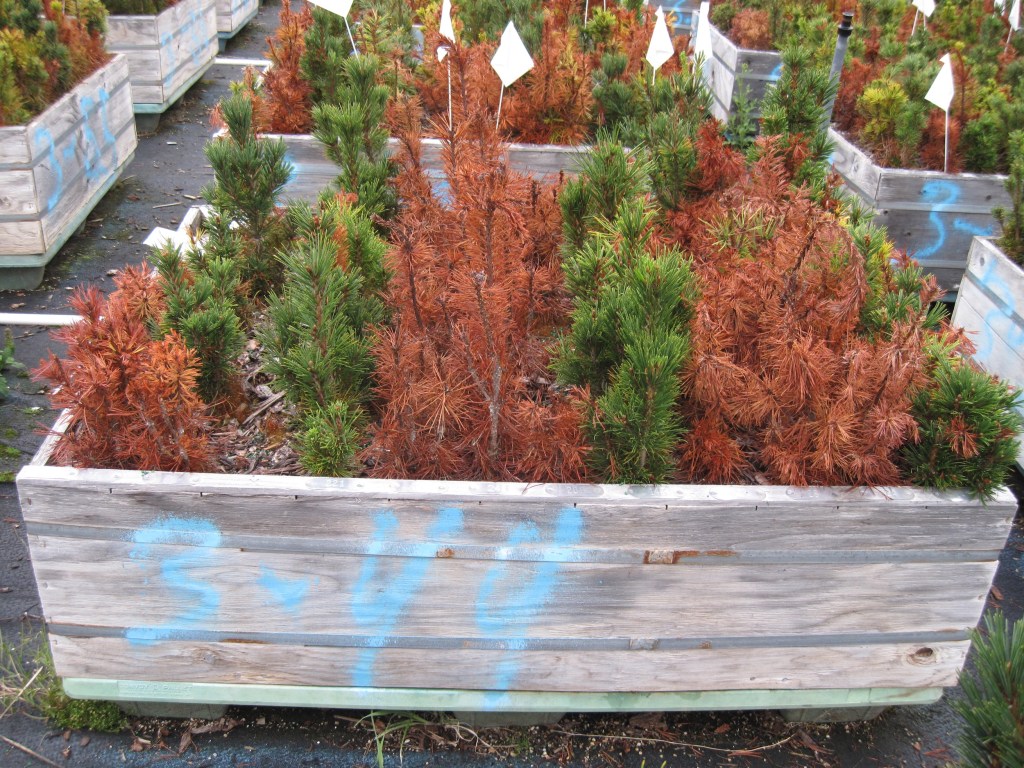
In a sense, it’s similar to when major catastrophes wipe out large swaths of wildlife populations: If enough survive, the creatures can find each other and repopulate. Trees, of course, can’t move. And lingering specimens of species like ash and hemlock are often so far apart that reproduction becomes impossible. By planting resistant saplings in large groups, scientists are giving natural selection—and eventually, reforestation—a leg up.
At the U.S. Forest Service, Sniezko, armed with his fog chamber, was one of the first tree breeders to successfully “save” a tree species from invasive pests using resistance breeding. Thriving whitebark pine and Port Orford cedar forests on the West Coast are largely due to his team’s efforts.
“Before, there were skeptics, and nobody was really putting it out there,” he says of resistance breeding. Despite decades of research, very few groups took the next step: developing an end product. But multiple new forest threats, and the persistence of older ones, have only reinvigorated his work. “The time is now. The proof has been shown.”
Sophie Hartley is an environment reporter based in Indianapolis, Indiana.